I had to take a local film crew to North Mississippi Regional Park again to see the heron rookerly. Since leaf out is so early (this is the first time since I've lived in Minnesota that I have seen lilacs blooming in April) I was curious how much of the rookery was still visible. Here's what it looked like a couple of weeks ago.
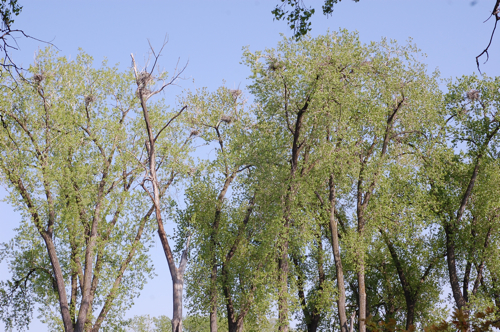
Some of the nests are still visible but most were quite hidden. One of the trees had fallen over in the last week. I'm not sure if it fell because it was dead and weak or if the local beaver had a hand (or should I say tooth) in it? Fortunately it's early enough that there most likely only eggs in the nest and any heron that had a nest in that tree has time to start over. Quite a few males were still flying in with sticks but almost every nest I looked at had serious incubation going on.
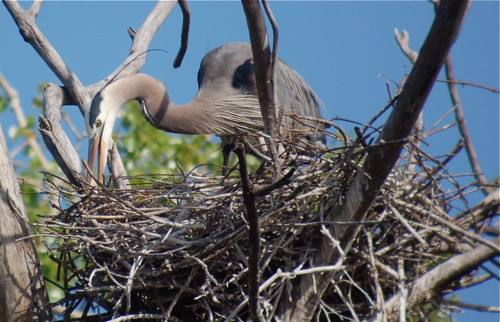
This heron stood up from her incubation and adjusted a few sticks and then she went through the motions of regurgitation. I wondered if she had a recently hatched chick? It's not out of the realm of possibility. What's interesting is that I gave a program last week at the fabulous Coon Rapids Dam and my friend Michelle Cook who works there said that the herons there did not return to the rookery this year. Since North Mississippi Regional Park's rookery is only about 7 river miles south of Coon Rapids Dam, I wondered if the herons were too tired to go further north? Or maybe it's because some other birds have moved into the Coon Rapids Dam rookery in recent years?
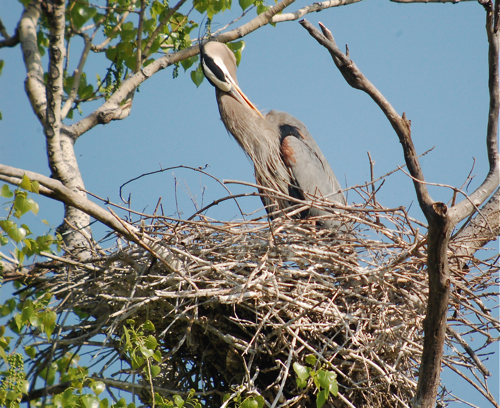
There is some bridge work going on near this rookery and I know people have some concerns. I doubt the bridge work is going to bother the herons. This rookery is in close ear shot of Hwy 94--it's noisy already. The birds seem to have a tolerance for noise. There's also quite a bit of river traffic along the river there anyway. So long as no one is climbing the trees, I think the birds will deal. If not, they will probably end up back at Coon Rapids next year.
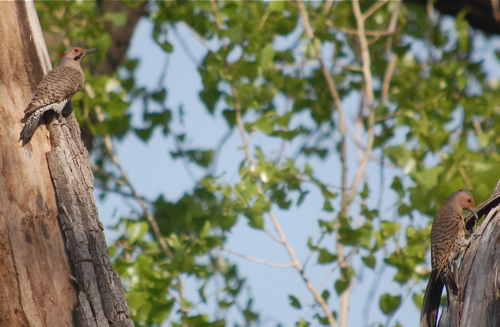
Speaking noise, one of the trees hosting some heron nests appears to be hosting a pair of yellow-shafted flickers too. The male is on the left (with the black mustache) and the female is on the right.
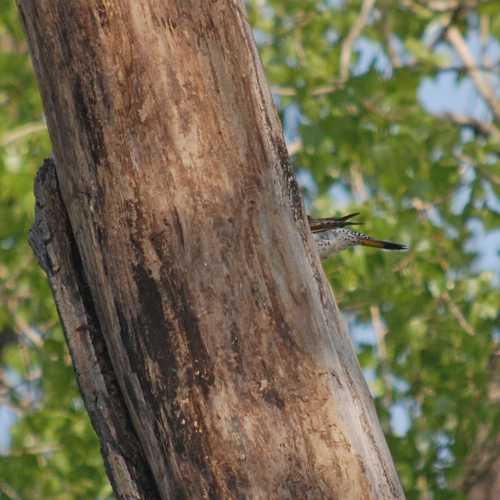
The male flicker worked his way up his trunk and disappeared into a hole. I wondered if he was excavating a nest cavity and soon got my answer:
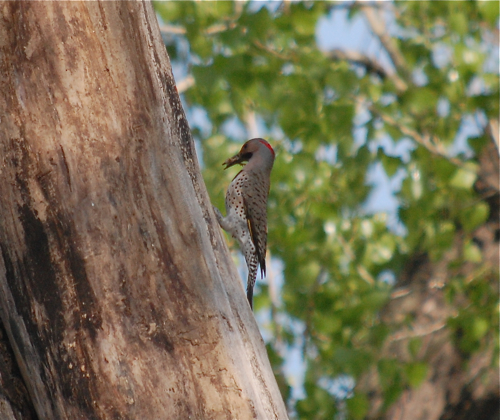
He came out with a beakful of wood chips. Hopefully it will be a successful nest and the pair will not be chased out by starlings. Wow. If the herons in that tree can put up with woodpecker hammering, I think they'll tolerate the Camden Bridge construction.
